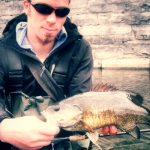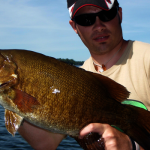Taking your musky fly fishing to the next level takes serious dedication and time on the water. If you are serious about putting fish in the boat consistently you need to be on your A game.
Fly fishing for muskies is a team sport on my rivers here in Northern Wisconsin. On lakes anglers can definitely fish successfully by themselves, but it’s simply not the case on flowing water. The ability to row safely and fish properly is the fly angler’s main priority. Your buddy rowing you down the river or guide rowing you down the river is fishing just as much as the guy who is casting. Proper speed and boat placement on the river is priority number one. Second step is fishing your zones of the boat properly. Boat control is a major emphasis, and it has to be a well oiled machine. Catching muskies with the fly rod is difficult, but when the fish are ready to play, it’s critical that we as anglers do everything right. The same can be said for anglers casting and fishing with conventional tackle, but it’s a different type of hook set and fight to the boatside in the fly realm.
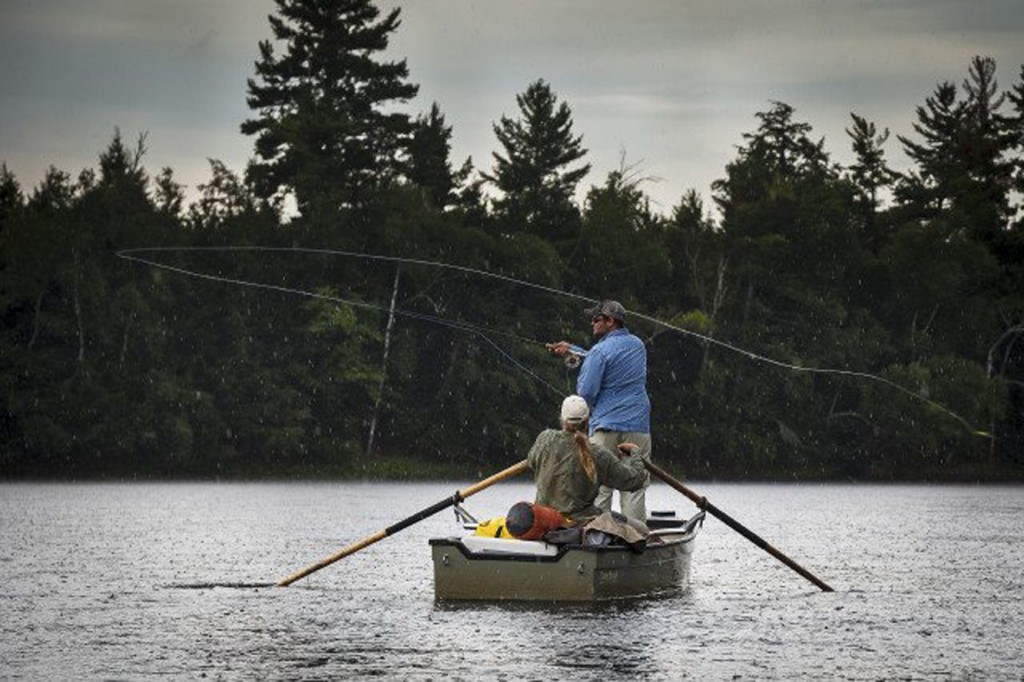
The Importance of Boat Control
On small to medium sized rivers, your main obstacle is going to be finding a fishing partner to split rowing time with you. Rowing your boat and navigating the course, whether it’s with an aluminum Jon boat, drift boat, or fiberglass skiff, is best done with oar power. It’s the only way to fly fish at 100% down the river (editor’s note – It can also be done with a bow mount trolling motor for those with sophisticated craft). Slowing down in the good spots, possibly anchoring, and letting the angler fish is obviously important. Your angles must be precise in order for the system to work best. As the one rowing and controlling the boat, you are the one in control and you need to think as if you are fishing and make sure that you not hitting rocks and the proper distance away from your casting zones. Meanwhile if you are fishing you want to play the angles. Your best bet is to hit your 45 degree angles. The front angle needs to be at front, casting down stream and fishing your fly back to the boat. If you are in the back of the boat you want to be hitting your spot and a 45 degree angle up stream and fishing your fly back towards the boat. It’s really about using the current to help you and adjusting your lines and flies accordingly to the depth.
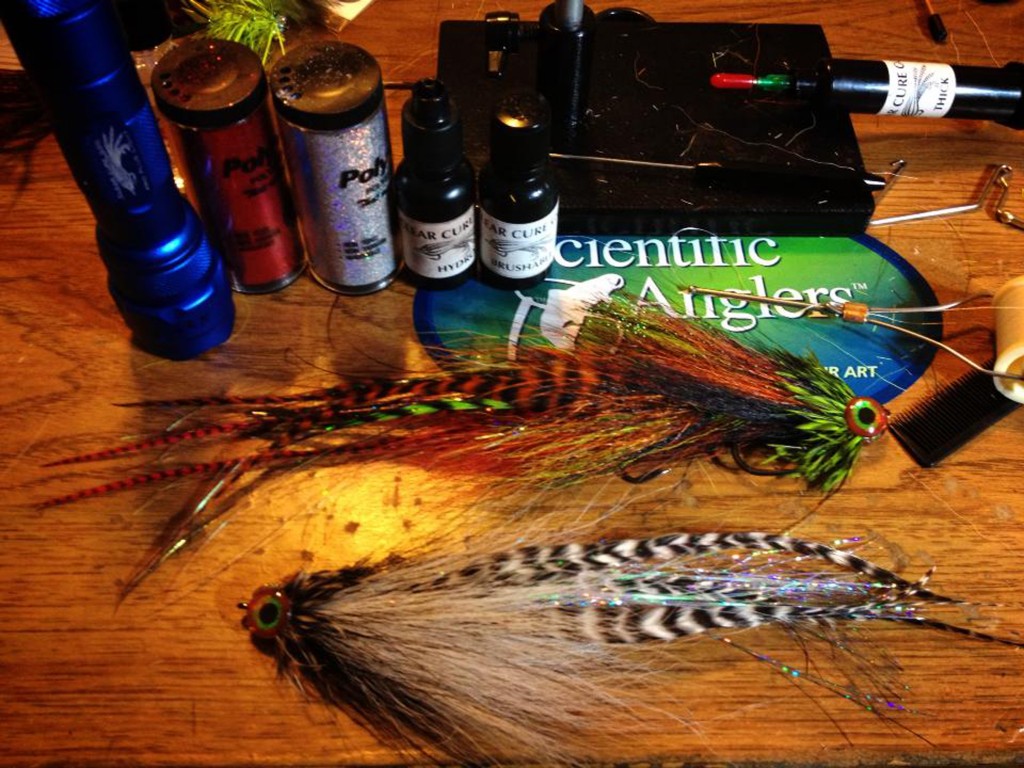
Fly Selection
Buoyant flies and sinking lines fish differently than intermediate lines and buoyant flies. Flies that sink even further will fish different scouring to lines as well. Pairing your line and fly set up to avoid getting snagged on the bottom, and putting the fly in the fishes target zones is the primary goal.
Rod placement on your retrieves will help you achieve your target. When retrieving the fly you can have your rod elevated or submerged below the surface up to a few inches from the handle. In some cases in the sandy less snag-filled areas you can put the tip of the fly rod in the sand and drag your fly in along the bottom, which is a killer technique during the fall to move fish. Other times you’re elevating the fly in order to swim retrieve it beneath the surface. Retrieves need to be constantly adjusted while fly fishing.
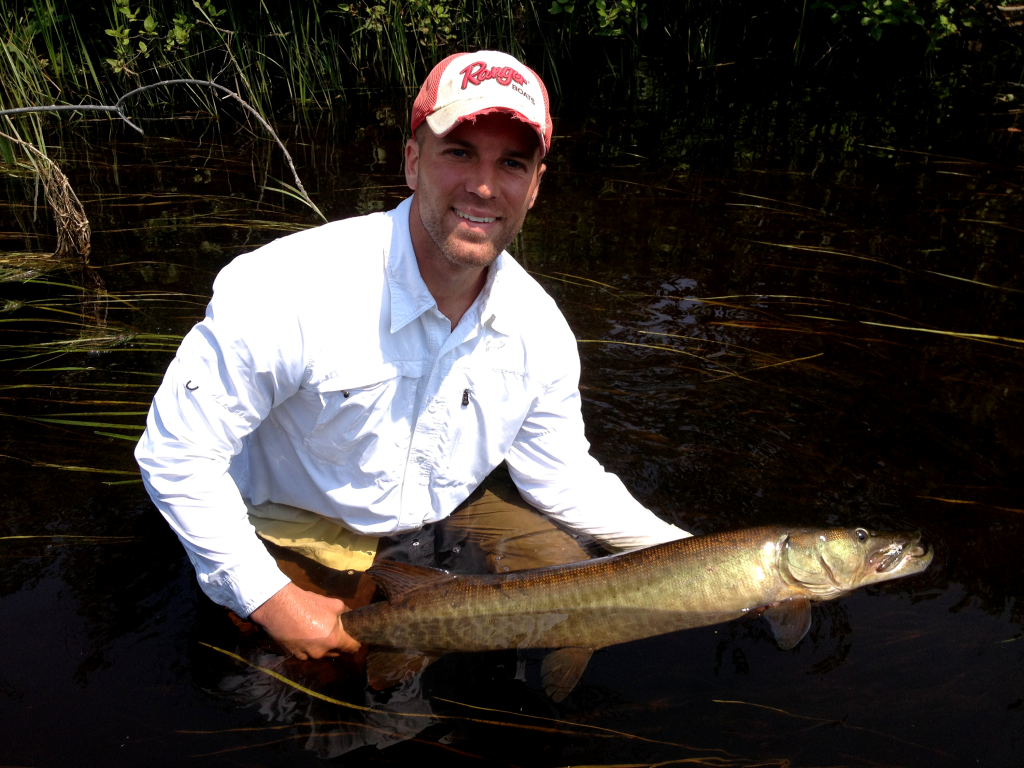
Hooking Up
When the hard work pays off and you get a hookup, its imperative to keep the fly rod tip down and strip the line in very hard repeatedly to drive that hook home through its muscular jaws. Fishing a barbless fly is beneficial to get the hook all the way to the bend like I mentioned in issue 13. Constant tension is needed to ensure hooks don’t come free. You need to keep the rod down and avoid pulling the musky to the surface. If they begin jumping and rolling you’re in for trouble. Crossing them up is important boat side to keep a good bend and tension of the fish. In other words when the fish is going left, your’re pulling right and vise versa. Most musky battles are won boatside on a short line. Muskies in general have a tendency to swim towards the boat after you hook them therefore keeping up with them and getting that cross-up is what you want to do. It’s a little scary trying to keep up with the speed and power of a muskie but when you cross them, the rod flexes all the way, and you feel the full power of the fish, it’s a successful play.
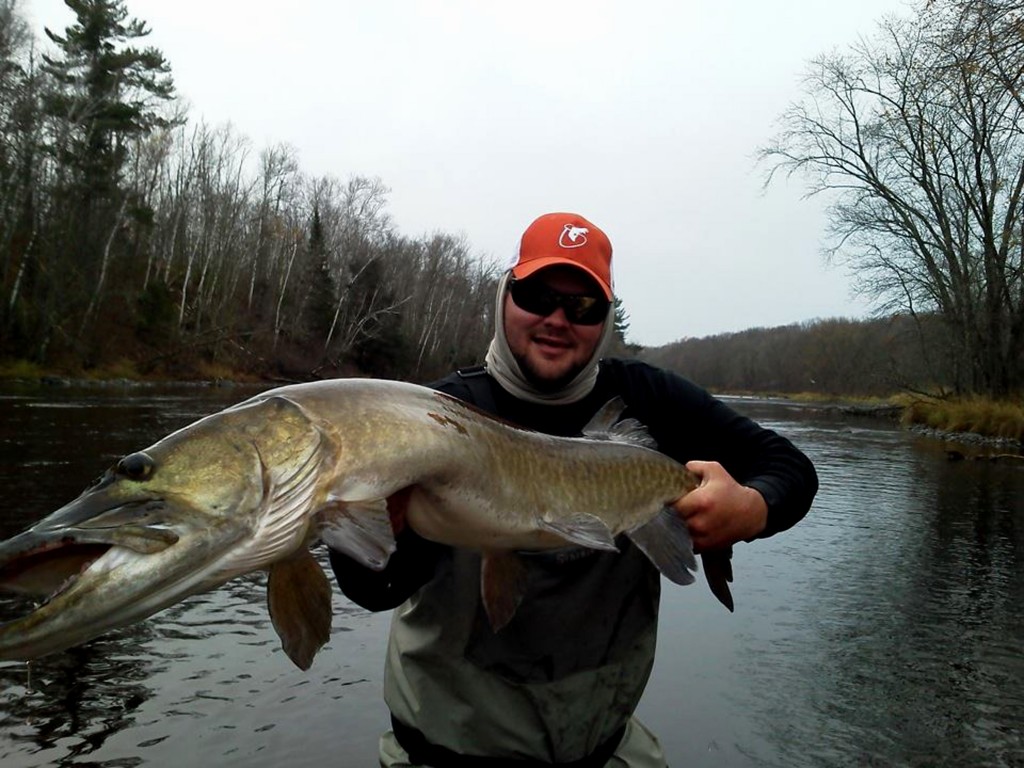
Figure Eight Techniques
When stripping the fly back all the way to the boat and transitioning into the figure 8, you cannot have any knots in the line or wrapped around the rod. If muskies strike and you have a knot stuck around the guide it could potentially break the rod. So not only you’ve lost that round, but an expensive fishing rod. If a knot does happen, you can turn your rod over so that the knot goes down the blank instead of running down the guides.
When playing muskies to boatside, you want to keep your figure 8 moving with big wide turns so the fish can still see and track it. Muskies have a blind spot in front of the tip of their mouth. Try and keep your fly under the boat so that the fish is seeing clearly behind the fly and not staring at the bottom of your boat. That can really help with weary boatside fish. The hookset is tricky and you want to make sure that you don’t just rip with the rod really hard expecting it to hook up. A lot of times when you do that you just pull the right out of their mouth. You want to achieve some sort of cross up and strip set.
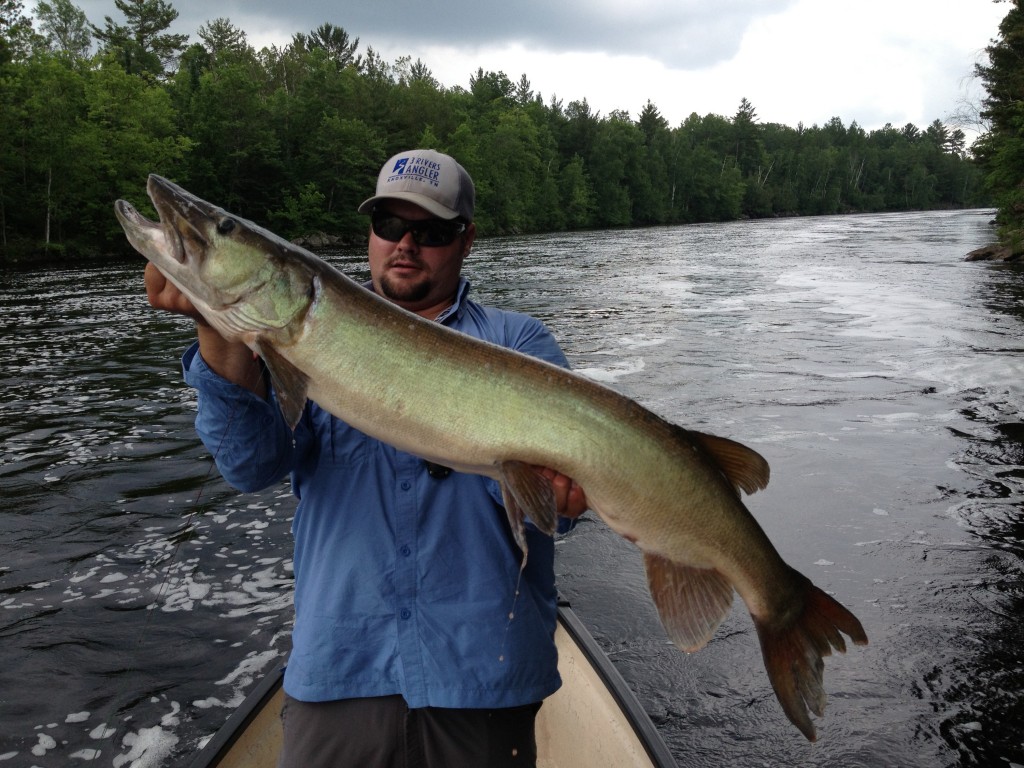
Fly Tools and Release Equipment
Lastly like in anything in musky fishing you need the proper tools and release gear. This includes jaw spreaders, longnose pliers, hook cutters, and a quality musky sized net (Frabill Power Catch or Conservation Series).
Muskies can sometimes get hooked deep with flies. They are a little smaller and more buoyant than a lot of baits and lures. Fishing barbless helps keep from killing deeply hooked fish. If you ever experience difficulties unhooking a fish you’re better off just cutting the hooks with a set of Knipex cutters, avoid the photos, and proceed with the revival and release. When releasing a musky in the river you want to point its head upstream so not to drown the fish. Water running backwards into the fishes gills will not let it breathe properly. Just hold the fish in the current, however long it takes, until it finally swims away. Don’t pull the musky back and forth in the water, as it will swim away when it’s ready – sometimes to the point of giving your face a good soaking. Best of luck musky hunting and taking your musky fly fishing to the next level in 2013.
A lifelong, self-proclaimed fishing addict, from northeastern Illinois’ Lake County, Chris Willen has been fishing since he was three years old. Chris has spent the last five years focused primarily on pursuing Muskies. In the relatively short span of a couple seasons with the fly rod, Chris has become a world-class fly angler and he can’t wait to share his knowledge with anyone willing to listen. Chris’ passion for fishing and dream of making fishing a fulltime career drove him to put the lakes of Illinois behind him and head to the big woods of northern Wisconsin to guide anglers to glory. Hundreds of days on the water have honed his skill to a remarkable level for someone so recently converted to the fly game. E-mail or call Chris Willen to reserve your trip in Northern Wisconsin.
Muskyfly87@gmail.com
847-878-4781



